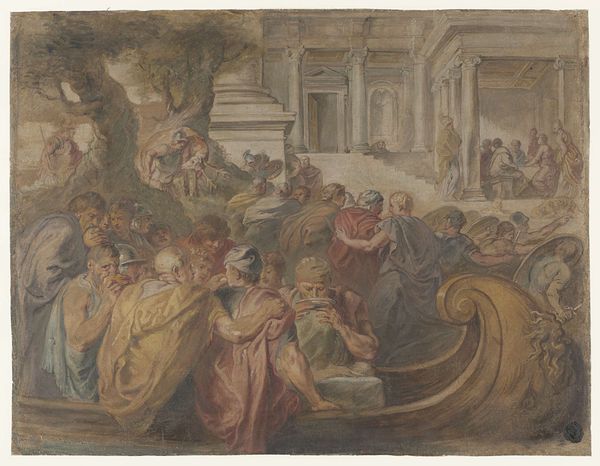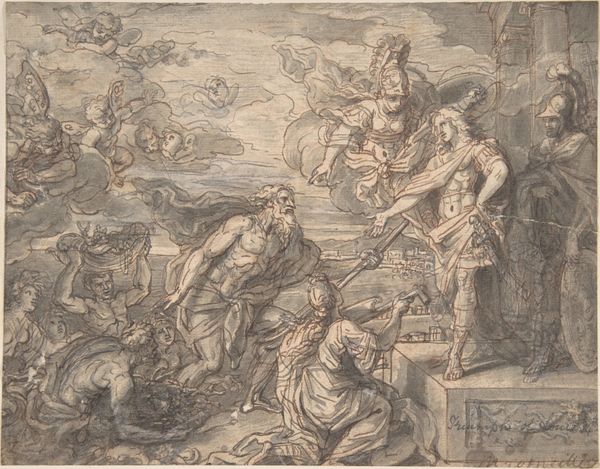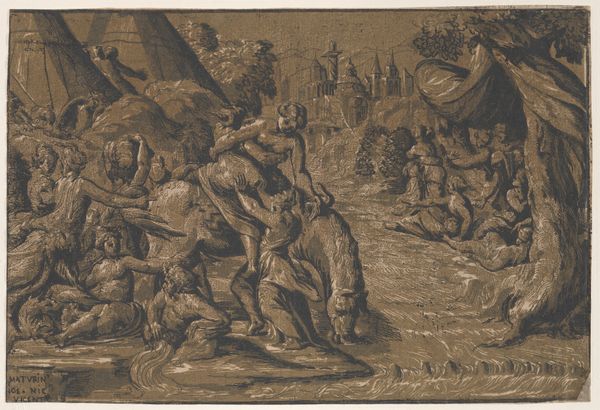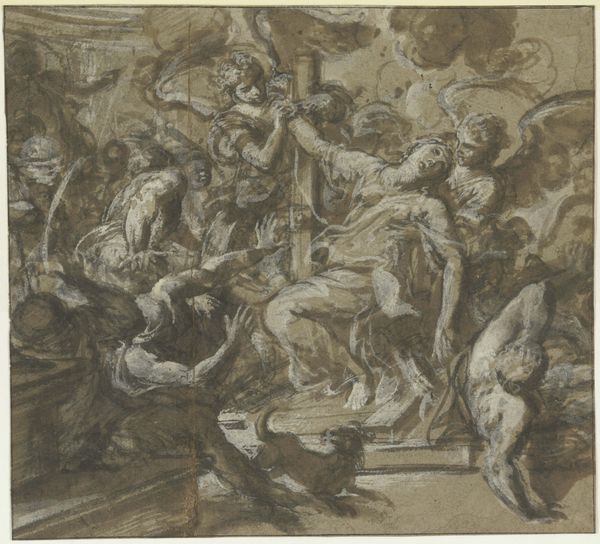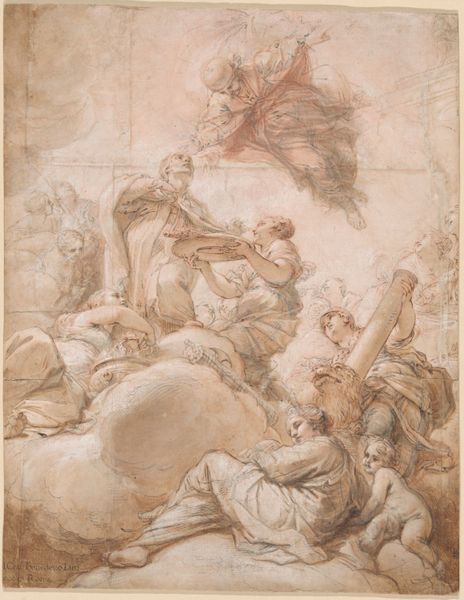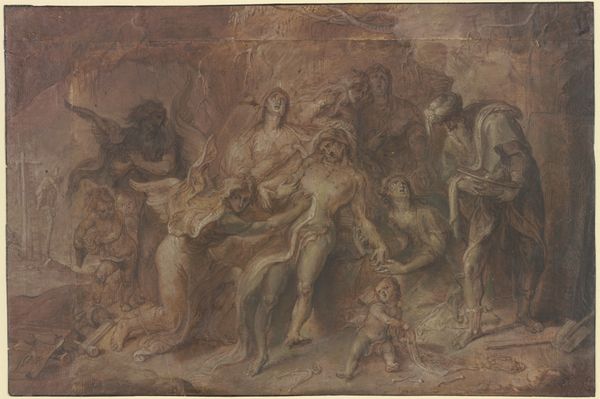
Drie gecombineerde episoden uit de geschiedenis van Odysseus 1587 - 1640
0:00
0:00
drawing, painting, watercolor
#
portrait
#
drawing
#
narrative-art
#
baroque
#
painting
#
figuration
#
oil painting
#
watercolor
#
group-portraits
#
watercolour illustration
#
history-painting
Dimensions: height 424 mm, width 570 mm
Copyright: Rijks Museum: Open Domain
This watercolor and brush drawing showing three episodes from the story of Odysseus was made by Peter Paul Rubens, probably around the 1630s. Rubens was a towering figure in the Antwerp art scene, his studio resembling a factory that shaped the visual culture of its time. Here, we see Odysseus and his men, caught in a tumultuous narrative. Rowing with Herculean effort, they navigate through perilous waters, a testament to human resilience. Rubens masterfully blends classical mythology with the dynamism of the Baroque. His use of light and shadow lends drama to the scene. Rubens’s interpretation of Homer reflects not only the literary tastes of the 17th century, but also the educational values of Europe’s elite. Odysseus, the archetypal hero, would have been understood by audiences of the time as an ideal to emulate. Understanding Rubens’s art requires more than aesthetic appreciation, it calls for historical contextualization. Research into the literary canon, social structures, and patronage networks can reveal the social and institutional forces that shaped Rubens' artistic production.
Comments
No comments
Be the first to comment and join the conversation on the ultimate creative platform.

